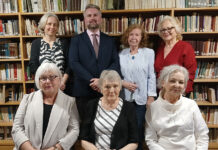
Tadas Kosciuška – A Lithuanian who changed the course of history…

A Lithuanian general known as Thaddeus Kosciuszko in America, Tadeusz Kościuszko in Poland and Tadas Kosciuška in Lithuania, has the highest peak in Australia named after him and more than dozen monuments in various US cities.
Juozas Skirius, a historian at Vytautas Magnus University in Kaunas told LRT.lt that several monographs dedicated to Kosciuška have been written in Poland, Ukraine and even Belarus, but not in Lithuania. Kosciuška considered himself a citizen of the Grand Duchy of Lithuania rather than the Kingdom of Poland.
An important fact in Kosciuška’s biography is his participation in the American War of Independence. Apparently, he was a close friend of the first president of the United States, George Washington, became a general and received the highest honours from American leaders. In June 1776, Kosciuška went to the United States with the intention of joining the American War of Independence. He served in the US army for eight years and earned a reputation as an exceptionally talented engineer and builder of defensive fortifications.
One of his most important works was the design of the West Point Fortress in the state of New York. Kosciuška also developed a plan for the decisive battle of Saratoga, which later became a symbol of the American Revolution. Eventually, the United States became Kosciuška’s second home. After the American War of Independence, he returned to Poland where he was imprisoned by the Russian tsar for his activities.
In August 1797, Kosciuška returned to the United States and dedicated himself to the liberation of slaves, directing all his wealth earned during the American War of Independence to this cause. During his life in the United States, Kosciuška championed the equality,freedoms and rights of different groups. His close aides were African Americans, Agrippa Hull and Jean Lapierre. The latter assisted Kosciuška in Poland during the Polish Uprising of 1794. Historian and author Alex Storozynski claims that Kosciuška not only stood up for the rights of peasants, Jews, and black Americans, but was also an active supporter of equal rights for indigenous peoples of America. During a meeting with the Miami Indian tribe in Philadelphia, he established a good relationship with its commander, Little Turtle.
Back in Europe he did not have the funds to pursue a military career, and was hired as a tutor for the daughters of Jozef Sylwester Sosnowski. The noble did not allow Kosciuška to marry the one he fell in love with, Ludwika, and their elopement was likely to incur the death penalty. Kosciuška fled to the US and offered his services to Benjamin Franklin, author of the Declaration of Independence. Very soon, Kos – as he was called by Americans – became a war hero.
Kosciuška famously led the 1794 Polish-Lithuanian uprising against the Russian Empire. For this, he is still regarded as a model of patriotism and heroism, although some opinions hold that he should have behaved differently in pursuit of the country’s independence.
Prof. Skirius notes that he was criticized for the defeat of the Polish-Lithuanian Commonwealth’s uprising against Tsarist Russia, but it should be remembered that the forces were completely unequal, and the Commonwealth itself was very weak. While Kosciuška is revered as a hero in Poland, Lithuania and the US, he is still waiting for recognition in Belarus, where people supporting the country’s opposition consider him a national hero. Every year, they celebrate Kosciuška ‘s birthday at his native estate in Brest, a Belarusian town on the border with Poland. February 2021 marks the 275th anniversary of his birth.



























